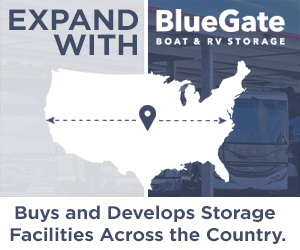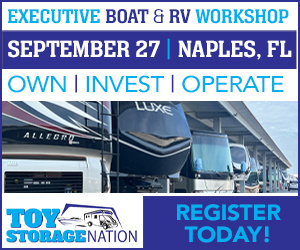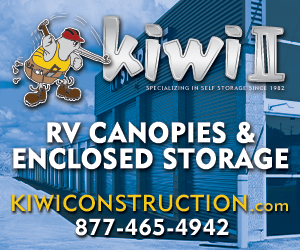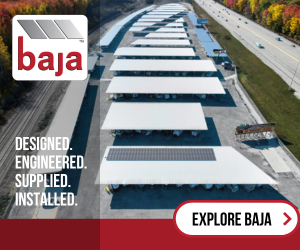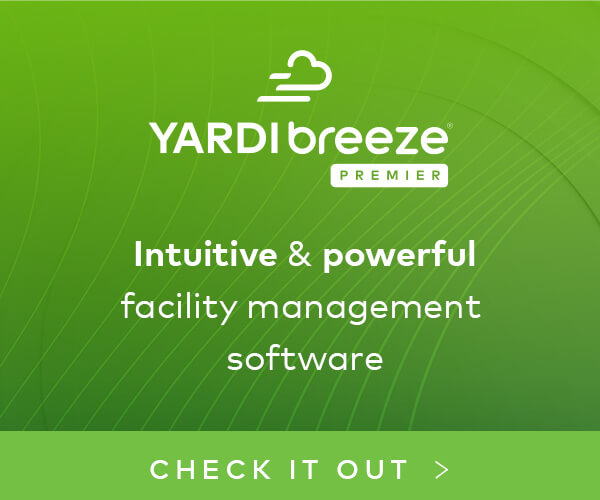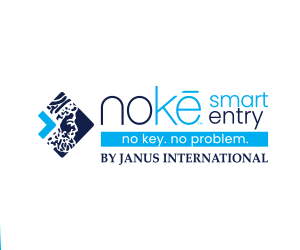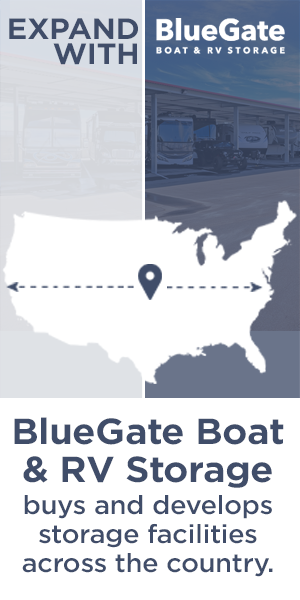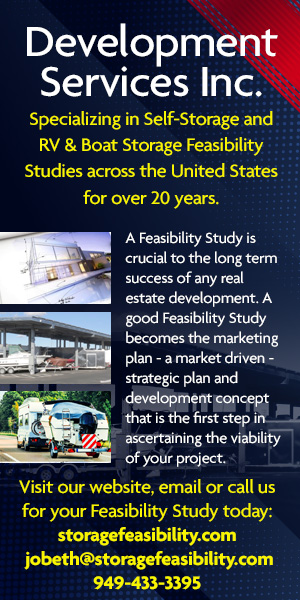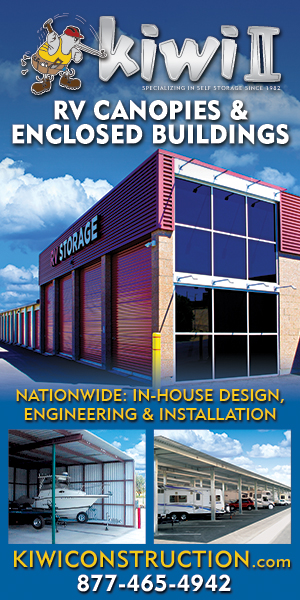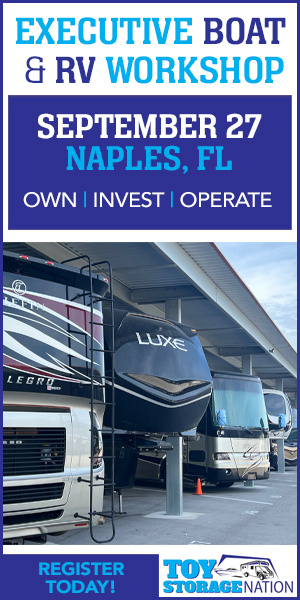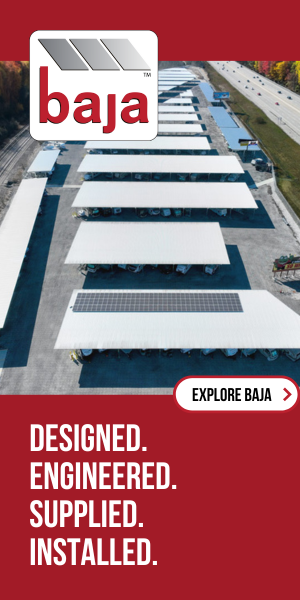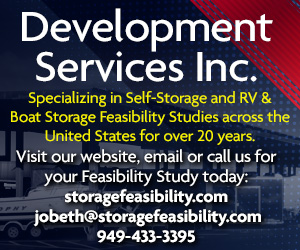By Cushman & Wakefield
Whether you are developing or acquiring an RV and boat storage facility, it is not only necessary but vital to understand the market that you are entering. Growth is a matter of fact within this industry, with the Sun Belt region leading the charge due to migration, favorable taxations, and proximities to end use. That lead is being tested by regions in the Midwest however, as seven states are coming in the top 10 for boat/yacht sales per 1,000 people, with Minnesota leading the pack.
Understanding your competition is king
The ability to set and adjust rates accordingly, correctly work through ground up development, hit or exceed your financial hurdles and lease up targets, all of which rely heavily on in-place and proposed competition as well as demographics based on a radius of that location. Studying your market, doing your due diligence on how big to build if your developing, what can you charge per space – in RV & Boat, we look at price per space, unlike self-storage which looks at price per sf – all fall in line with how competitive you can be coming out of the gate.
Investment and development landscape of RV and boat storage
The surge in ownership of major personal recreational equipment has created high demand for specialized storage of RVs, boats and other equipment. RVIA2 reports that RV owners use their vehicles 25 days annually, while boat owners use their boats 54 days per year, necessitating storage in close proximity to their homes. With low competition, tenants tend to remain in place long term, and the low overhead associated with operating RV and boat storage make this an attractive property type for investors.
Demand drivers
Boat sales are driven by various factors such as increasing disposable income, a resurgence in travel in a post-pandemic world, and rising interest in recreational activities associated with boating. According to the National Marine Manufacturers Association, nearly 12% of all American households own a recreational boat. The trend towards boat ownership remains strong as consumers seek a more personalized and exclusive leisure experience.
While there has been a surge in the sales of outdoor recreational equipment in the last several years, economic uncertainty is expected to suppress industry growth in 2023. The new shipment forecast by the RV Industry Association projects RV wholesale shipments to rise above 350,000 units. For example, in the Fall 2023 issue of RV RoadSigns3, the quarterly forecast prepared by ITR Economics for the RV Industry Association projects wholesale RV shipments to range between 363,700 units and 375,700 units, representing a 22% to 24% increase in a year over-year comparison. Additionally, the Fall 2023 quarterly forecast expects year-end shipments to range between 287,200 and 307,000 units.
Let’s Get High Class
Integration and the utilization of key amenities should be used as a draw for the type of clientele that you intend to attract. The standards of RV and Boat Storage have shifted over the years, and now we can see the correlation between the amenities offered and the rental rate that can be achieved. Dump Stations, RV wash, air, ice, and dog parks are just a few amenities that are increasingly becoming industry standards for Class-A facilities. Taking a step back for a moment, let’s define what the difference in classes are and set a standard moving forward. Essentially there are three set classes that most facilities will fall into – with outliers both above and below the line.
In these properties, you will have all the requirements of Class A, and a step beyond, with full white-glove service and automated options including touchless technology such as the “Nokē Smart Access System” that allows tenants to enter the gate and their unit through a phone app. Class A+ sites also include valet services, hand wash, and full temperature controls, just to name a few.
All Class A storage facilities include the following: built on a paved lot (asphalt or concrete), enclosed with secure fencing, security gate for entering and exiting and canopy structures or fully enclosed units to protect vehicles from the elements. At these sites you will also see the implementation of dump stations, RV wash, air, etc., for the benefit of the end user. Additionally, a light amperage of electricity can be installed at each stall at an additional charge to the renter for their use while prepping the vehicle for travel.
Utilizes canopied structures on most or all of the property and will consist of either dirt or paved drives/spaces or a combination of both. A fortified block wall surrounding the entirety of the facility provides protection for vehicles. In this scenario we see the use of camera systems, mechanical gates, and management software being implemented as part of the overall site plan.
These properties consist of non-striped, dirt lots that may or may not have fencing and lack a canopied structure for protecting vehicles stored. Often, these facilities began as raw land where the owner’s park vehicles as an ancillary use while determining the highest and best use for the property.
Conclusion
RV and boat storage has traditionally been viewed as an easy, virtually hands-off business, but this couldn’t be further from the truth. The intricacies involved in running these facilities and/or taking on the development of a RV and boat storage property are immense, and it is vitally important to understand and prepare for the nuances of this niche product type.
Cushman & Wakefield is here to help in assisting you in every step of the process, from market studies and due diligence for acquisitions to investment sales and appraisals/valuations. Backed by 100 years in the real estate industry and the expertise of the Mele Group, we provide the support you need to make sense of the ever-growing RV & Boat Storage market. We are Cushman & Wakefield’s RV & Boat specialists, a full-service, real estate team specializing in the RV & Boat asset class, and we are here to help you. With experience in all facets of the real estate industry and the RV & Boat storage asset class — from investment sales and advisory to feasibility and market studies — we deliver outstanding results that move our clients forward.
Special Note: This article is an excerpt from Cushman & Wakefield’s RV & Boat Storage 2023 Investment Insider. Read the full report here.


















